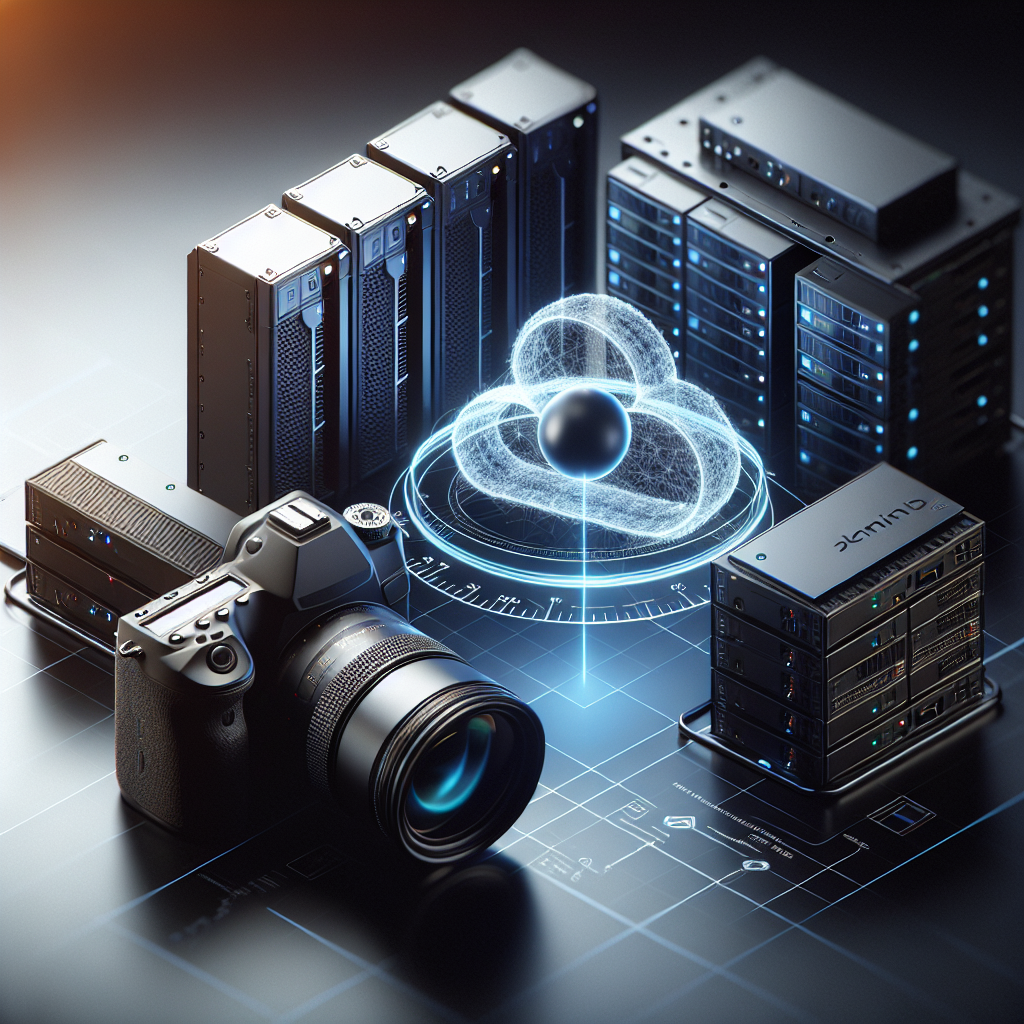Revolutionizing AI: A Comprehensive Guide to Deploying Models on the Edge
Table of Contents
- Introduction
- Understanding Edge Computing
- Benefits of Deploying Models on the Edge
- Key Technologies Enabling Edge Deployment
- Challenges of Deploying Models on the Edge
- Real-World Examples of Edge Deployment
- Best Practices for Edge Model Deployment
- The Future of Edge Computing and AI
- Conclusion
Introduction
We live in a time where data is flowing like never before, and let’s be honest—finding ways to process and analyze all that information efficiently is a big deal. Sure, traditional cloud computing is powerful, but it can also introduce delays, sky-high bandwidth costs, and privacy concerns that mess with our ability to make decisions in real-time. That’s where edge computing steps in, bringing AI closer to the action. Picture a smart factory where machines make lightning-fast decisions based on data analyzed right on-site, or a self-driving car that processes information without having to rely on distant cloud servers. These scenarios aren’t just sci-fi fantasies; they’re quickly becoming our reality thanks to edge model deployment.
In this guide, we’ll dive deep into deploying models on the edge. You’ll get to know the benefits, see real-world applications, and discover the tech that makes it all possible. Whether you’re a seasoned pro in the AI world or just dipping your toes in, we’re here to help you navigate the ins and outs of edge deployment, so you can make the most of this groundbreaking technology.
Understanding Edge Computing
So, what exactly is edge computing? At its core, it’s all about processing data closer to where it’s actually created, rather than relying on a central cloud infrastructure that’s miles away. With the explosion of IoT devices and the demand for real-time analytics, this shift is more important than ever. By moving computing and data storage closer to the source, businesses can enjoy faster response times, save on bandwidth, and boost data privacy—pretty cool, right?
1. What is Edge Computing?
Edge computing means distributing computing resources and storage closer to the end-user or device. Instead of sending data off to a central server, it allows immediate processing. This means less waiting around and a more efficient operation overall.
2. Key Components of Edge Computing
- Edge Devices: Think sensors, cameras, smartphones, and industrial machines—all the gadgets that generate data.
- Edge Gateways: These are like middlemen that process and filter data before it makes its way to the cloud or other destinations.
- Edge Servers: Localized servers that handle data processing and analytics, which means less reliance on the cloud.
3. The Role of AI in Edge Computing
AI is a game-changer for edge computing. It allows for smart decision-making right at the point where data is generated. Think about it—machine learning models can be put on edge devices to analyze info in real-time, giving us insights and enabling automated actions without needing a constant cloud connection.
Benefits of Deploying Models on the Edge
Deploying models on the edge comes with a whole host of benefits that can seriously ramp up operational efficiency and enhance user experiences. If you’re looking to tap into the power of edge computing, understanding these advantages is key.
1. Reduced Latency
One of the biggest perks of edge deployment? Lower latency! By processing data locally, organizations can enjoy nearly instant response times—which is crucial for applications that rely on real-time decision-making, like autonomous vehicles and industrial automation.
2. Bandwidth Optimization
Another win for edge deployment is that it cuts down on the amount of data sent to the cloud. This helps lower bandwidth usage and costs, which is a major plus in places with spotty connectivity or where data transmission can get pricey, like in remote areas or mobile networks.
3. Enhanced Privacy and Security
Processing sensitive information on the edge gives companies more control over their data. By keeping things local and reducing cloud storage needs, businesses can better manage privacy risks and stick to data protection regulations.
Key Technologies Enabling Edge Deployment
To effectively deploy models on the edge, several technologies play crucial roles in ensuring data processing and communication happen smoothly.
1. IoT Devices
Internet of Things (IoT) devices are the backbone of edge computing, serving as the primary data sources. They generate heaps of data that can be processed right where it’s created, leading to actionable insights.
2. Microservices and Containers
Using microservices architecture and container technologies like Docker and Kubernetes makes it easier to deploy machine learning models on edge devices. These tools offer scalable and flexible deployments that can be efficiently managed and updated.
3. Edge AI Frameworks
Frameworks such as TensorFlow Lite, Apache MXNet, and Edge Impulse are specifically built for deploying AI models on edge devices. They help optimize models so they can run smoothly on devices with limited resources, all while keeping performance up to par.
Challenges of Deploying Models on the Edge
While the benefits of edge deployment are compelling, there are challenges that organizations need to tackle for a successful rollout.
1. Resource Constraints
Many edge devices come with limited processing power, memory, and battery life, which can limit the complexity of the machine learning models you can deploy. Organizations will need to choose and optimize their models carefully to fit these constraints.
2. Data Management
Keeping track of data across different edge devices can get complicated. Organizations require solid solutions for data synchronization, storage, and processing to ensure the insights generated at the edge are accurately reflected in central systems.
3. Security Risks
While edge computing can boost privacy, it also brings new security challenges. Edge devices can be more susceptible to attacks, so it’s vital for organizations to implement strong security measures to safeguard data and systems.
Real-World Examples of Edge Deployment
To give you a clearer picture of how edge deployment works in the real world, let’s look at a few examples across different industries.
1. Manufacturing
In manufacturing, edge computing is transforming production processes. For example, GE’s digital wind farm initiative uses edge AI to analyze real-time data from wind turbines. By processing data on-site, the system can optimize energy production and maintenance schedules, leading to significant cost cuts and improved efficiency.
2. Healthcare
In the healthcare field, edge deployment is stepping up patient care through remote monitoring. Wearable health monitors analyze vital signs right on the device and send alerts to healthcare providers if something seems off. This kind of timely intervention can prevent serious health crises and lead to better patient outcomes.
3. Retail
Retailers are getting in on the action too, using edge computing to enhance customer experiences. Take Walmart, for example—they use edge AI to analyze in-store traffic patterns and optimize their inventory management. By processing data from cameras and sensors on-site, Walmart makes smart decisions about product placement and stock levels, boosting sales in the process.
Best Practices for Edge Model Deployment
To make sure your edge deployment is a success, consider these best practices:
1. Optimize Models for Edge Devices
Before you roll out machine learning models on the edge, take time to optimize them for the specific hardware. Techniques like pruning, quantization, and knowledge distillation can shrink model size and improve performance without losing accuracy.
2. Implement Robust Security Measures
Security should always be a top concern when deploying models on the edge. Organizations should implement encryption, secure access controls, and regular software updates to protect against vulnerabilities and keep sensitive data safe.
3. Monitor and Maintain Edge Deployments
Keeping an eye on edge deployments is crucial for maintaining top performance and reliability. Organizations should set up monitoring protocols to track device health, data accuracy, and model performance, allowing for quick adjustments when necessary.
The Future of Edge Computing and AI
The future of edge computing and AI looks incredibly bright, thanks to ongoing advancements in technology. As 5G networks become more common, the capabilities of edge computing will broaden significantly, enabling faster and more reliable connections for edge devices. This opens up a world of possibilities for AI applications across different sectors, pushing automation and efficiency even further.
1. Integration with 5G Networks
5G technology is set to revolutionize edge computing with ultra-low latency and high bandwidth. This means we’ll be able to deploy more advanced AI models on edge devices, paving the way for real-time analytics in areas like autonomous vehicles and smart cities.
2. Enhanced Interoperability
As edge computing tech matures, we’ll see greater interoperability between devices and systems. This will allow for seamless data sharing and collaboration across platforms, making edge deployments even more effective.
3. Continued Innovation in AI
With the continuous evolution of AI algorithms and machine learning methods, organizations will have the ability to deploy more sophisticated models on edge devices. This will drive increased automation and intelligence across industries, completely changing how businesses operate.
Conclusion
Deploying models on the edge is a transformative strategy that’s reshaping industries and helping organizations tap into the full potential of AI. By understanding the benefits, challenges, and best practices for edge deployment, businesses can optimize their operations and foster innovation. As technology keeps evolving, the future of edge computing and AI is filled with exciting opportunities for those willing to embrace this shift. So, why not start exploring edge model deployment today and see how it can revolutionize your business?
Are you ready to elevate your AI applications? Dive into the world of edge computing and discover how it can change the game for your operations!






